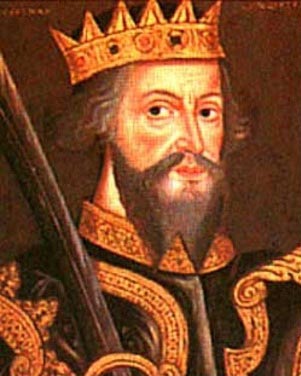The Reign of King Erik II
King Erik won the election in a landslide, receiving over eighty percent of the votes. The celebration after Erik's coronation was the largest ever. The new king invited the people of Stockholm into the great hall to celebrate. The hall was packed shoulder to shoulder with peasants wanting to enjoy free food and beer courtesy of the king. The next morning, the hall was littered with sleeping bodies from all walks of life. The people of Stockholm loved their king's generosity, but some of the jarls had many of their possessions stolen during the night. After recovering from the celebration, King Erik immediately took to the streets of Stockholm trying to recruit settlers to send to Iceland. Even with his newfound popularity among the common people, he had difficulty getting people to leave their land behind to move to a place that is called a land of ice. He then took the countryside to find more recruits for his project, but it would be years until the first ship sailed to Iceland.
Many of the people of Lochlann converted to Orthodox Christianity like their Norwegian and Danish cousins. With these new conversions, Orthodoxy surpassed the traditional Norse Polytheism as the most popular religion in the union.
The Celtic tribes on the eastern isle of Uineill banded together against our raiding parties and built the town of Áth Cliath on the east coast of the isle to try and combat us.
Some of the jarls displeased with King Erik's rule fled the union to Trøndelag, just north of Norway. The jarls wanted to live at peace with the union, so war was not immediately declared on the small kingdom.
Finnish Muslims grew upset because they were being ruled by what they called idol-worshipers. They eventually tried to stage a coup and overthrow the king. Luckily, the Finnish garrison was strong enough to put down the revolt, but many peasants and soldiers died.
King Sancho of Castile declared war on the union because The Norse king is a heathen and the Christian people under Norse control must be liberated from his rule. King Erik did not believe Sancho's excuse for the war as Erik's wife was an Orthodox Christian, but Castile would have to pay for its insolence.
The Castilian armada quickly moved to blockade the English Channel and cut off our reinforcements from reaching Francia, but they were too late as the Norse army was already in Bretland marching toward the city of Santander.
Castilian soldiers marched from Germany into Holstein. Their position scared the people of Denmark, but they never made any move toward Roskilde.
Norse soldiers marched through the Navarre countryside at an incredible pace. The men grew extremely tired from marching over hill after hill to reach Santander. Leading the army was King Sigurd of Orkney who had always wanted to fight the Spanish and had grown impatient. He only gave his men two day's rest before attacking the city. The soldiers' lack of rest combined with the summer heat and exhausted the Norse army as they charged uphill toward Santander. After charging through a rain of arrows, the Norse soldiers hit a spear wall. The attack was a stalemate in terms of numbers lost, but it was a tactical failure on Sigurd's part. The Norse army withdrew back outside the city to lick their wounds. Sigurd had been wounded by a spearman during the battle and died of an infection two weeks after. The next in command was King Eirikr of Halland. Eirikr waited another three months after Sigurd's death before launching the next attack. The Castilian bowmen had been crushed during the initial attack, so all that remained of the Santander garrison were the spearmen. Eirikr was still outnumbered, but he had a plan. He left most of the Norse army in the forest just outside of Santander and led a smaller force through the fields where they met the Castilians. After only a few minutes of fighting, the Norse line began to falter and King Eirikr called for a retreat back to the forest. The Castilian army gave chase and followed Eirikr's men into the woods. Norse soldiers appeared from behind trees and surprised the enemy soldiers. The Castilian general realized his blunder and called for his men to fall back to the city, but it was too late. The Norse army hunted down the Castilians and slaughtered them. They then looted the city of Santander, took slaves and torched the city. Eirikr immediately lead his men out of the area and began the retreat back to Bretland before the Castilians launched a counterattack. Both sides lost thousands of soldiers during the fighting, but Eirikr's cunning and bravery won the battle and earned him the title Eirikr Bloodaxe.
King Erik opened up trade relations with the Tibetans even though it was purely political move like such relations with the Chinese.
King Erik was traveling to Bretland to oversee what was left of the Norse army when he fell into a freezing river and came down with the flu. He refused to stop to let his illness pass and continued on his journey. This would prove to be a poor choice as King Erik would pass just six days later. The war with Spain distracted King Erik from gathering volunteers to settle Iceland, although ships would leave in just a few years. The war is not going too well as the Castilian navy controls the North Sea and English Channel and very little remains of the Norse army. Luckily, The Castillians do not seem to wish to launch any land assault onto our territory.
 .
..



















